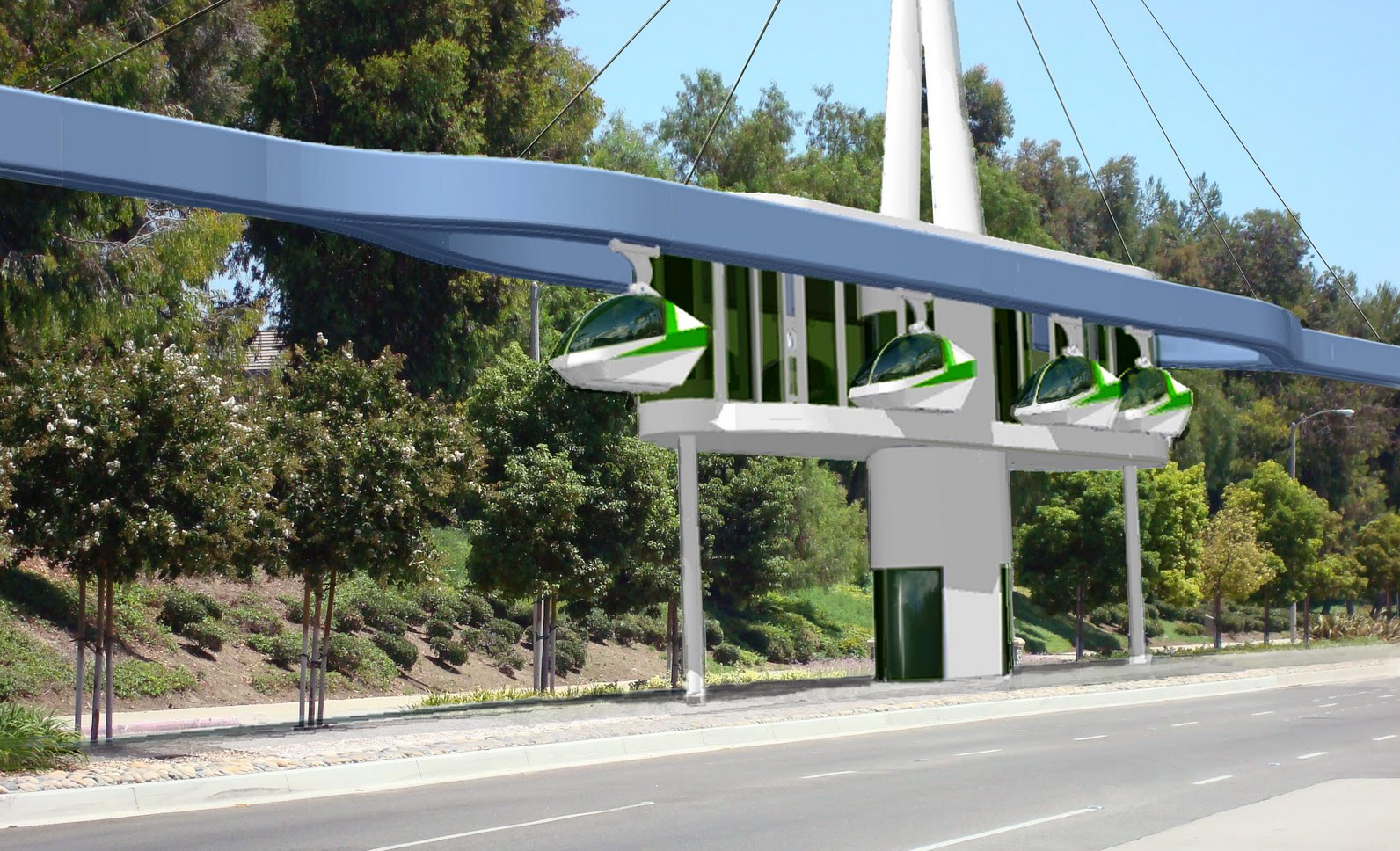I’m not an irredeemable cynic because I didn’t have much hope that an elevated-pod transportation system would skim the sky in Tel Aviv just as scheduled. It’s easier, however, for a private concern to install such rich infrastructure, as Google is planning to do with pedal-and-solar powered pods on its sprawling campus, with the help of an outfit named Shweeb. From Adele Peters at Fast Company:
“The pods come in different sizes that can hold two, five, or 12 people, and can also be connected to carry packages or other cargo. The guideways that hold the cars can also double as carriers for power lines and cables. ‘We’ve envisioned the guideway that the pod runs on to become a conduit for all things electrified,’ [Stephen] Bierda says. ‘It’s a multi-purpose piece of infrastructure.’
Cyclists can throw a bike in the back of a pod, and ultimately, the company believes that the system will make it easier to bike on the ground by getting cars off the road. ‘It’s 3-D transport,’ Bierda says. ‘That leaves the surface level—streets and sidewalks—for people to walk and cycle on.’
The system is at least 30% cheaper to build than other mass transit infrastructure, and fully renewably powered. It can also be tied to the grid to feed excess electricity back to the city. ‘We envision this as a public utility,’ Bierda explains. ‘If it’s run like a utility, that also helps secure the air rights to build over streets, and parks, and parking lots.’
First built for an amusement park in New Zealand, the system won $1 million in Google’s 10^100 competition in 2010 for further development as a form of alternative transportation. The system will use tech from Google’s robocars to track the pods, and Google’s Mountain View campus will be one of the first to build a track. Some 22 other customers are also waiting in line.
The big question is whether something like this can really take off; planners started talking about personal rapid transit systems in the 1950s, but the idea hasn’t had much success.”

